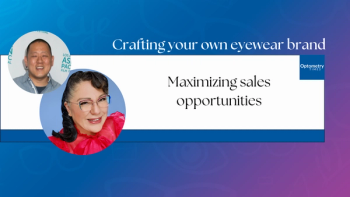
Studies support healthy lifelong diet as best defense against ocular disease
Studies have confirmed that good nutrition may have both preventive and therapeutic benefits for the eyes and body, but for ocular health specifically the advantages seem more likely to occur when eating wisely is a lifelong habit rather than a response to a disease.
"Good nutrition has the most impact when it's used as prevention. Whether or not there's any disease process going on, it's important to eat a healthy diet," said Andrea Gregory, RD/LDN, MD, Brody School of Medicine, East Carolina University, Greenville, NC. Dr. Gregory is also resident physician at Pitt County Memorial Hospital in Greenville.
Evidence suggests that nutrition plays at least a minor preventive role in several primary ocular diseases, such as glaucoma, cataracts, and age-related macular degeneration (AMD). Recently, Dr. Gregory reviewed current theories about nutrition and eye health.
Antioxidant intake may help prevent AMD by countering the oxidative damage light causes. Limited evidence suggests that high intake of vitamins A, E, and C, and the carotenoids lutein and zeaxanthin, may slow the progression of AMD. However, antioxidants may be protective but not therapeutic for cataracts.
Finding a dietary balance
The AOA has issued recommendations for intake of five essential nutrients that promote healthy vision and may reduce the risk of eye diseases. Individuals intent on these goals have two choices, which are not mutually exclusive: diet and supplements.
"It's always preferable to try and get nutrients from your food," Dr. Gregory said. "You're getting more than just a single compound; you're getting fiber and other vitamins and minerals. Also, you may be able to fill up on fruits and vegetables and eat less of other things that don't have as many benefits."
But in some cases, getting the recommended dietary level of a particular nutrient from food alone would be difficult or impractical, so supplements may be indicated.
"Supplements can be a really good source of nutrients when the diet can't provide everything that is needed," Dr. Gregory said. "But when they're used in that sense they should be thought of as a medication. Doctors need to know what patients are taking because there might be interactions with other medications or conditions. Also, purity and dose aren't regulated."
Choosing supplements
One helpful guideline in selecting a nutritional supplement is to look for a seal from the United States Pharmacopeia or Consumer Lab (both nongovernmental organizations). These marks indicate that the product has been submitted for voluntary testing and that the ingredients are as described on the label.
The nutrients most often recommended for ocular health are lutein and zeaxan-thin, vitamins C and E, essential fatty acids (DHA/EPA), and zinc.
Lutein and zeaxanthin are found in green, leafy vegetables as well as other foods. They are thought to be beneficial in diseases such as cataract and AMD and may have therapeutic as well as preventive effects, Dr. Gregory said. The AOA recommends 10 mg/ day of lutein, along with 2 mg/day of zeaxanthin, an amount that could be obtained in one half cup of spinach. Toxicities with lutein and zeaxanthin are minimal.
Newsletter
Want more insights like this? Subscribe to Optometry Times and get clinical pearls and practice tips delivered straight to your inbox.













































